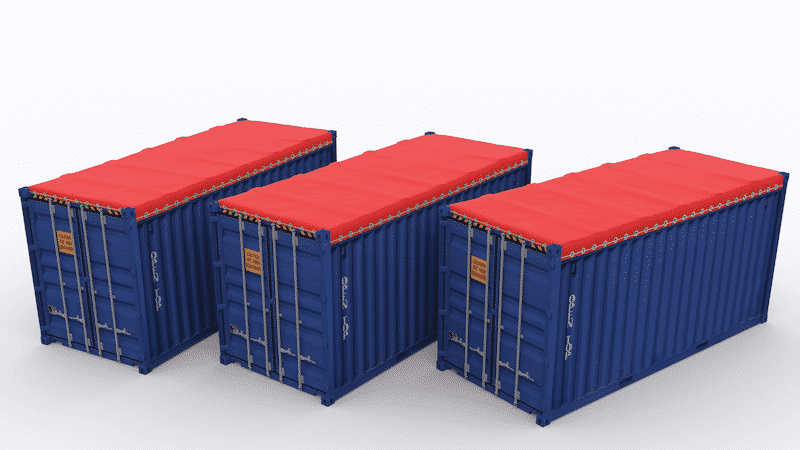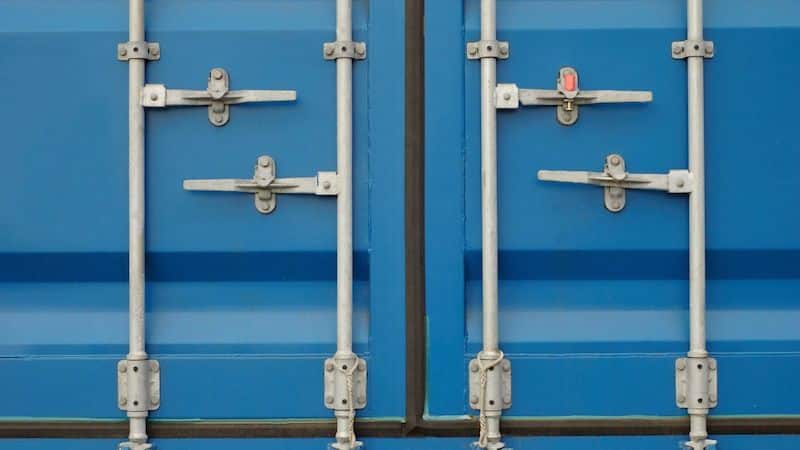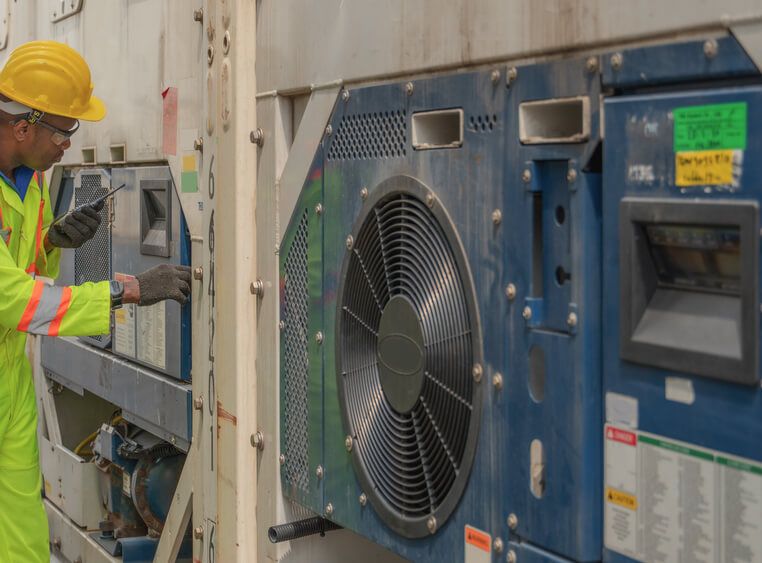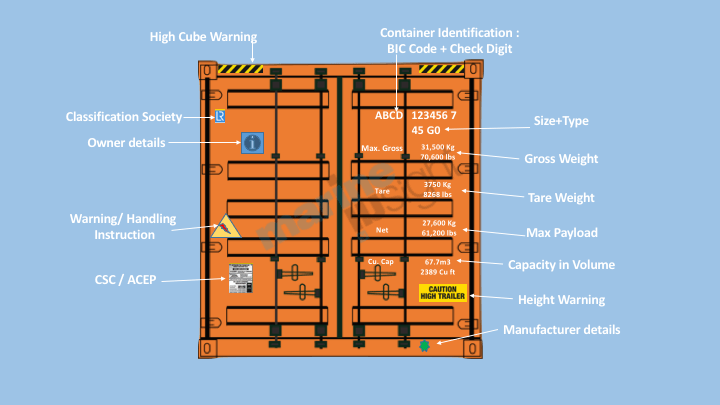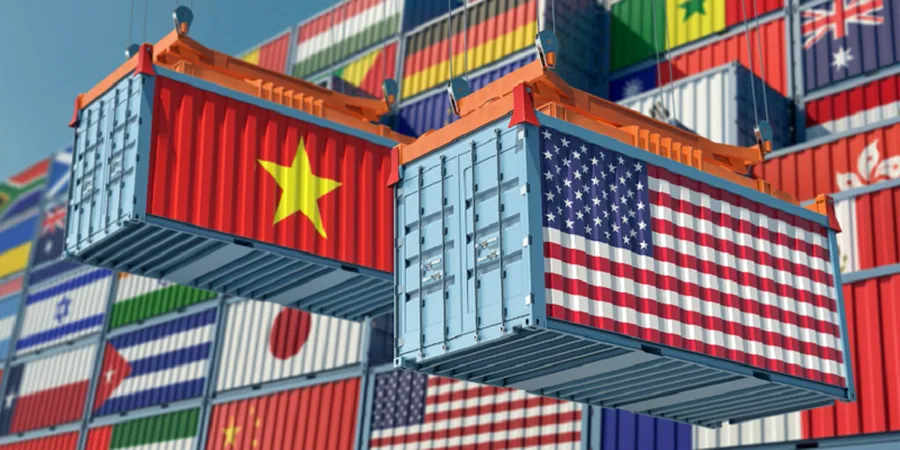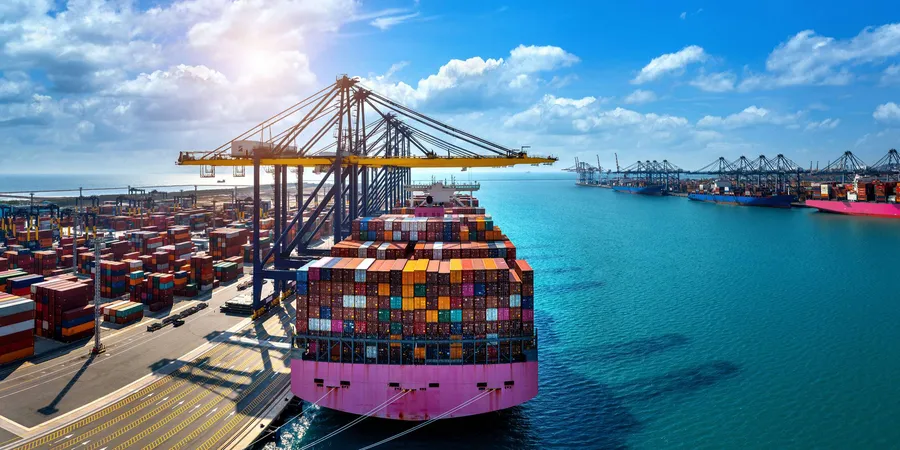TEU in Shipping – Everything You Wanted to Know
Developed economies and rapid industrialization has led to the exponential growth of the cargo transport industry. 85% of international trade is done using ocean freight with a very vast majority of these cargo being transported in shipping containers.
Container vessels that can accommodate several thousand TEU on board, help move large quantities of cargo from one point to another.
The largest of such vessels can accommodate about 23000 TEU! Statistics of the World Bank show that close to 800 million TEU containers were shipped globally in 2019.
The COVID-19 pandemic had a negative impact on world trade and the movement of goods. However, the discovery of vaccines in 2021 to combat the pandemic is seen as the silver lining and the world’s economy is expected to bounce back.
Origin of the Modern Intermodal Container
Before the shipping container came into the scene, the cargo was usually loaded inside boxes of different sizes for handloading onto trucks and ships.
Malcolm Maclean, an American transport entrepreneur developed the first container made of corrugated steel in 1955 that could be easily transported on a truck or ship. He later sold the idea of his invention to the United States military which used these boxes to transport military equipment.
The two decades following the invention saw containers of different sizes and locking mechanisms that posed problems when it came to loading on different trucks and ships. In the following years, these problems were gradually sorted out.
The first standard container vessel launched in 1968 was Hakone Maru, a Japanese registered ship. This ship sailed between Japan and the west coast of the US. It catered to the transport of TEU containers and it could transport 752 twenty-foot equivalent unit containers.
Along with the different modes of transport that cater to the industry, the equipment used for transporting goods, and the technology used have also evolved. Modern cranes and cargo handling equipment are just two examples.
Types of Containers
Different types of cargo are transported over land, sea, and air. It is generally categorized as dry, chill, or frozen. Cargo could be temperature-sensitive, for example, food products, meat, pharmaceutical drugs, etc.
Such temperature-sensitive cargos have to be transported in containers that can maintain the temperature or humidity requirements of the cargo.
There could be other special transportation requirements too. Containers of different types and sizes are used to transport the different types of cargo based on the customer’s requirements. It is estimated that currently there are between 20 to 23 million TEU in circulation globally!
Containers are generally of two categories – dry containers and refrigerated containers.
Usually, dry containers are bare containers with lockable doors at one end though, containers with doors on either end are also found.
Refrigerated containers also known as reefers are used to transport goods that require special temperature settings so that they do not deteriorate or get damaged during transit and storage. The internal temperature of a reefer is controlled according to specifications.
Flat racks and open-top containers are used for the transport of Out of Gauge cargo (OOG). These are cargo that comes in abnormal sizes and shapes that do not fit inside a conventional shipping container such as a twenty-foot or a forty-foot container.
Examples for OOG cargo are wind turbine blades, very large industrial boilers, bulldozers, etc. Flat racks and open-top containers are also available in sizes of twenty-foot and forty-foot.
Container Size
Shipping containers come in two standard sizes, namely, twenty-foot and forty-foot containers. In shipping terms, these two are referred to as a TEU (Twenty-foot Equivalent Units) and an FEU (Forty-foot Equivalent Units) respectively. A standard TEU or FEU also goes by the name of a general-purpose container (20’ or 40’ GP container).
Though containers of varying sizes are used globally for the transportation of goods, the TEU and FEU are the most common. Some other sizes that shipping containers come in are forty-foot High Cube (40’ HC), forty-five-foot High Cube (45’ HC), etc.
The high cube containers have a height of one foot more than the normal GP containers. It is interesting to note here that in the world container market, there are more general-purpose containers than high cube ones, just as there are more of FEUs in circulation than TEUs!
Typically, a TEU is made of tough, heavy-duty, weather and corrosion-resistant steel, known as Corten steel. The components of such a container are the front-end wall panels, a roof, two sidewall panels, the floor, and a door frame with the door assembly and locking mechanism. One of the sidewall panels usually has a small opening for ventilation.
Containers are locked using lock-rods that run vertically on the two doors. Each door usually has two lock-rods on it. Port authorities around the world require that loaded containers for transport are secured using at least one container seal that is affixed on the lock-rod mechanism in its prescribed slot.
The lock and seal are for the safety and security of the cargo inside the container. Container seals are covered by the standards set by the International Standards Organization (ISO) under ISO 17712:2013.
Let us take a look at the dimensions of a TEU here.
The external length of a twenty-foot equivalent GP unit is 20 feet. It has a width of 8 feet and a height of 8 feet 6 inches. Its internal dimensions for loading are a length of 19 feet 4 inches, a width of 7 feet 8 inches, and a height of 7 feet 10 inches.
There might be minor differences in measurements between containers made by different manufacturers but remember that they all have to fit correctly on the trucks they are loaded, meet the specifications of the lifting and handling equipment that are used in seaports, as well as in the container storage area of a ship.
Pallets
Typically, a general-purpose TEU can hold about 11 wooden pallets arranged in a single stack. The number of pallets can go up to 22 when pallets are double stacked. Again, a lot of these numbers depend on whether standard pallets or euro-pallets are used. It also depends on the height of each packed pallet.
While the International Standards Organization (ISO) has set the standards for uniform pallet size and quality through its ISO standard 18333: 2014, the standard pallets and the euro-pallets vary in size. Dimensions of the former are 48 inches X 40 inches while the latter has dimensions of 47.24 inches X 31.50 inches.
Container Load
What is the weight that can be loaded inside a twenty-foot container? Logistics and shipping companies normally load up to 24000 kilograms (24 metric tons) of cargo in a TEU.
An empty container of this size weighs 2280 kilograms (2.24 metric tons). Hence the total weight of a fully laden twenty-foot container will be 26280 kilograms (26.28 metric tons).
The actual weight-bearing capacity of a twenty-foot container is 28200 kilograms (28.2 metric tons) and its fully laden total weight is 30480 kilograms (30.48 metric tons).
Cubic meter (CBM) is the standard unit to measure freight volume. If we look at the overall volume that a twenty-foot GP container can take, it is about 33 CBM (cubic meters). However, the actual usable freight volume will only be in the range of 25 to 28 CBM.
Now, that brings us to the question of what is the basis of charging freight by the shipping company? When a business leases a container for transporting cargo, the charge will be for the full container irrespective of whether it fully or partially filled.
However, for Less-than Container Load (LCL) shipments, according to the convention, if the weight of cargo exceeds 1000 kilograms (1 ton) then the weight is used for the calculation of freight charges.
Only when the weight is below 1 ton is the volume in CBM considered for the calculation of freight.
TEU Reefer and Dimensions
Reefer containers are sturdy, large, mobile refrigerators that are used to carry goods with special temperature requirements. They can maintain a temperature normally ranging between -30° C and +30° C.
Reefers are cooled using Gensets (generator sets) that work on both electricity and fuel since they are transported over land as well as by sea on cargo carriers.
Refrigerated containers use temperature logging equipment called Data Loggers to indicate and log temperature inside a reefer unit during transport.
This data can often be downloaded onto a personal computer for evaluation. Most of the reefer containers in circulation around the world are of TEU size.
Because of the design and insulation materials used in the construction of reefers their internal dimensions are much less than normal dry vans or TEU.
While loading and stacking cargo, enough gap has to be left for the circulation of cool air within the container. This eats into space further. Gratings on the container floor and the walls along with the additional space at the base of a pallet help in air circulation.
Another requirement while loading the container is to leave a minimum space of 12 centimetres between the cargo and the inner roof of the TEU reefer.
The internal length of a TEU reefer is 17 feet 10 inches. Its width is 7 feet 6 inches and the height is 7 feet 1 inch. These containers have a tare weight (weight of the container when empty) of 2990 kilograms and they can take a maximum payload of 21450 kilograms or a volume of 24 to 26 CBM (848 to 918 cubic feet) each.
What is a CSC Plate?
Containers that are used to transport cargo have something called a CSC plate fixed on them and a TEU is no exception. The CSC plate is a safety approval plate that lists the container details such as its design, inspection date, the gross weight (total weight of the container and its payload) of the container, etc. These details are required as a minimum.
According to the CSC 1972 (Convention for Safe Containers), every container that is used for transportation of cargo has to be inspected by an authorized inspector once in 30 months to certify its sea or roadworthiness. A CSC plate is fixed on the container after each such successful inspection.
Convention for Safe Containers 1972
Convention for Safe Containers 1972 abbreviated to CSC 1972 is a set of uniform safety regulations that applies to all transport containers above a certain prescribed size.
The convention was jointly held by the United Nations (UN) and the International Maritime Organization (IMO) to promote human safety while handling transport containers.
The CSC 1972 mandates containers that are covered under this convention to fit safety approval plates showing the required details on it.
Comparison – TEU and FEU
The table given below provides a quick comparison between the TEU and FEU.
| Equipment |
Size (LxWxH) |
Internal Dimensions (LxWxH) |
Weight of Container (TARE) |
Weight of Cargo (NET WEIGHT) |
Volume |
| TEU | 20’ x 8’ x 8’6” | 19’4” x 7’8” x 7’10” | 2280 KG | 28200 KG | 33 CBM |
| FEU | 40’ x 8’ x 8’6” | 39’5” x 7’8” x 7’10” | 3700 KG | 28800 KG | 67 CBM |
| TEU REEFER | 20’ x 8’ x 8’6” | 17’10” x 7’6” x 7’1” | 2990 KG | 27490 KG | 27 CBM |
| FEU REEFER HC | 40’ x 8’ x 9’6” | 37’11” x 7’11” x 7’11” | 4520 KG | 29480 KG | 67.5 CBM |
| TEU OPEN TOP | 20’ x 8’ x 8’6” | 19’5” x 7’8” x 7’6” | 2280 KG | 28000 KG | - |
Note: There may be minor variations in dimensions between containers of different series or make.
What Goes Inside a TEU?
Yet another difficult question is, what can go inside a TEU? It would depend on several factors such as the packing, weight, and volume of the cargo.
For comparison sake, let us say about 282 bags of flour each weighing 100 kilograms, 2820 packets of corn weighing 10 kilograms each, 1 large car with enough padding around it to prevent scratches and damage, or about 100 washing machines double-stacked is what a GP TEU can hold. However, remember that these numbers depend a lot on the individual packing of cargo and other such factors.
Reference: Marine Insight


